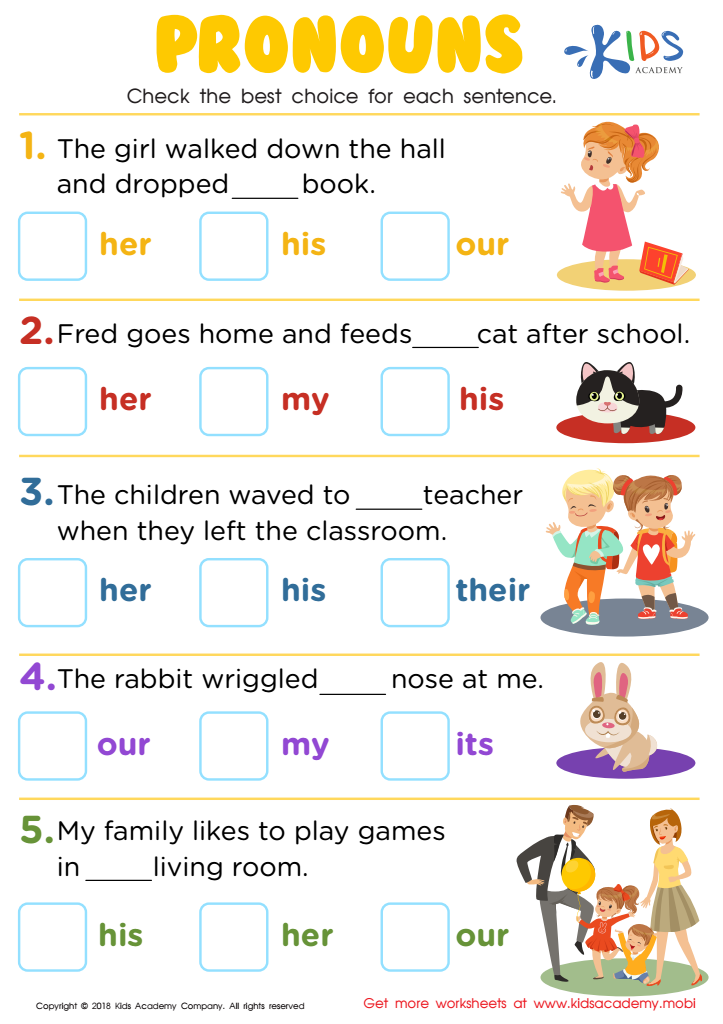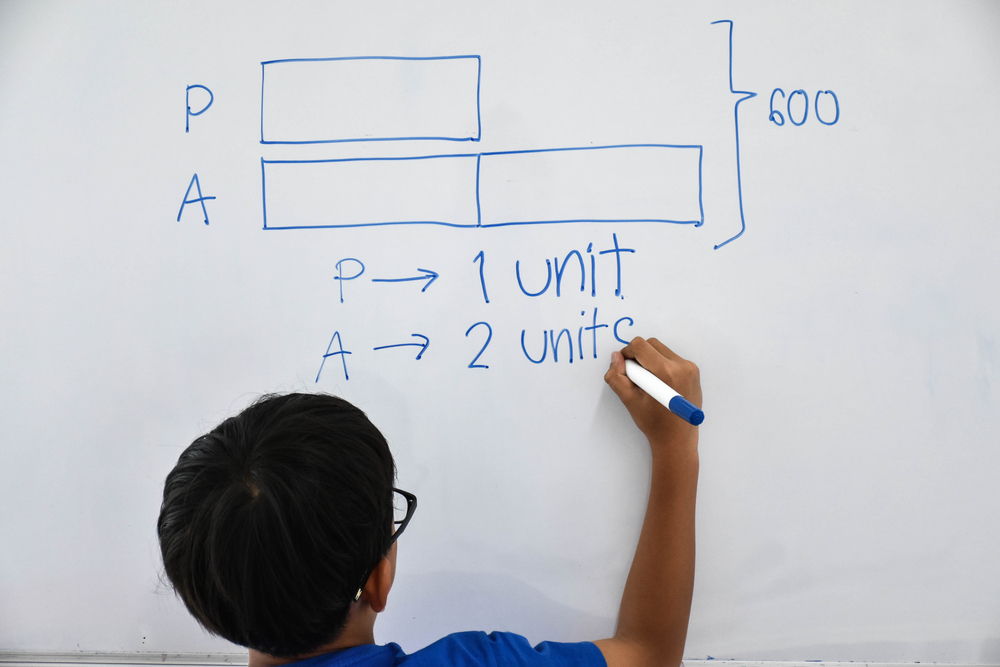Pronoun recognition Worksheets for Kids
2 filtered results
-
From - To


Pronouns Worksheet


She, Her Printable Sight Words Worksheet
Question/Answer
How to train the Pronoun recognition skill in Grade 1 students learning about Alphabet?
To train Grade 1 students in pronoun recognition, start by introducing basic pronouns (he, she, it, they) through storytelling or simple sentences related to familiar objects or characters. Use visuals and interactive activities, like matching pronouns to pictures or playing pronoun bingo. Regularly practice identifying and using pronouns in sentences both orally and in written exercises to reinforce learning.
How does the mastery of the Pronoun recognition skill affect a student's performance at an early age?
Mastery of the pronoun recognition skill at an early age significantly enhances a student's reading comprehension and writing clarity. It fosters better understanding of sentence structure and relationships between subjects and objects, facilitating smoother communication and reading fluency. Early proficiency in this area can lead to stronger overall literacy skills, laying a solid foundation for future academic success.
What are some effective activities to train students’ Pronoun recognition skill when teaching them about Alphabet?
Effective activities for pronoun recognition during alphabet teaching include matching games where students pair pronouns with appropriate nouns, fill-in-the-blank sentences focusing on pronoun usage, simple sentence construction exercises swapping nouns with pronouns, and interactive storytelling or role-play where students have to use pronouns to describe characters or actions. These activities enhance understanding of pronouns in a fun, engaging way.
 Assign to My Students
Assign to My Students















